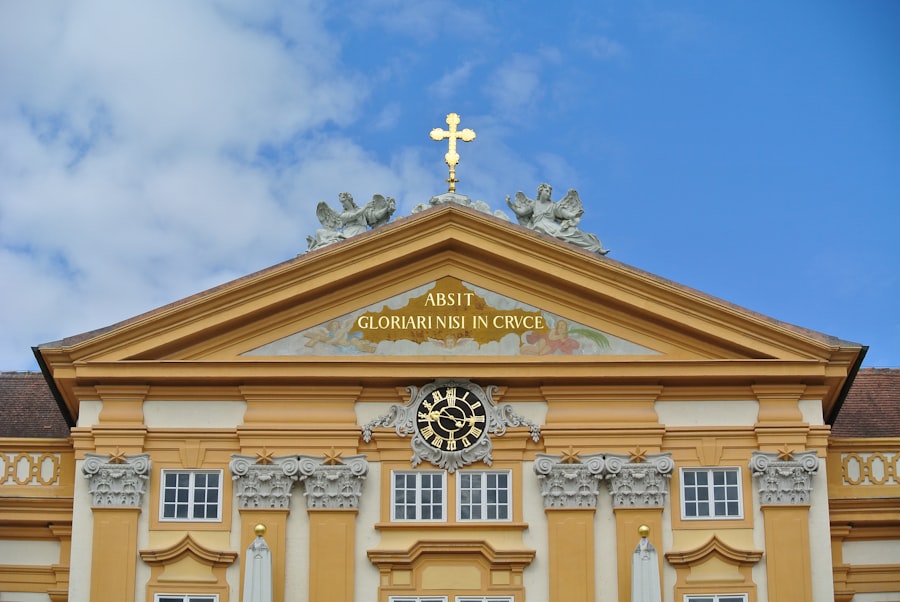The Majestic Manila Cathedral: A Historical Gem
Description
The Manila Cathedral, officially known as the Cathedral-Basilica of the Immaculate Conception, stands as a monumental testament to the rich history of the Philippines and its enduring Catholic faith. Its origins trace back to the Spanish colonial period, with the first structure built in 1581 under the auspices of the Spanish friars. This initial edifice was constructed primarily from bamboo and nipa palm, reflecting the rudimentary architectural practices of the time.
However, it was not long before this first cathedral succumbed to the ravages of fire and natural disasters, a fate that would befall many iterations of the structure over the centuries. The cathedral has undergone numerous reconstructions, each reflecting the evolving architectural styles and the resilience of the Filipino people. The most significant rebuilding occurred after World War II when the cathedral was heavily damaged during the liberation of Manila in 1945.
The current structure, completed in 1958, was designed by renowned architect Fernando Ocampo and showcases a blend of Romanesque and Gothic architectural elements. This latest incarnation not only serves as a place of worship but also stands as a symbol of hope and renewal for a nation that has faced numerous challenges throughout its history.
Key Takeaways
- The Manila Cathedral is a historic landmark with a rich history dating back to the 16th century.
- The architectural design and construction of the Manila Cathedral is a marvel, showcasing a blend of different styles and influences.
- The Manila Cathedral has played a significant role in Philippine history, witnessing important events and ceremonies.
- As a symbol of faith and resilience, the Manila Cathedral has withstood natural disasters and wars, reflecting the strength of the Filipino people.
- Restoration efforts have been ongoing to preserve the beauty and cultural significance of the Manila Cathedral, making it a popular tourist destination and pilgrimage site.
Architectural Marvel: The Manila Cathedral’s Design and Construction
Exterior Grandeur
The cathedral’s façade is a stunning fusion of Romanesque and Gothic influences, featuring a grand rose window that allows natural light to filter into the interior, creating an ethereal atmosphere during services. The use of reinforced concrete in its construction was innovative for its time, providing both durability and aesthetic appeal.
Interior Beauty
Inside, the cathedral is adorned with beautiful stained glass windows that depict various biblical scenes and saints, enhancing its spiritual ambiance. The high altar is a focal point of reverence, intricately designed and embellished with gold leaf, reflecting the opulence associated with Catholic worship.
A Masterpiece of Filipino Artistry
The nave is spacious and inviting, capable of accommodating thousands of worshippers during significant liturgical events. The careful attention to detail in both the exterior and interior design speaks to the dedication of those who contributed to its construction, making it not just a place of worship but also an architectural masterpiece that embodies the artistic spirit of the Filipino people.
The Manila Cathedral’s Role in Philippine History

Throughout its storied existence, the Manila Cathedral has played a pivotal role in shaping Philippine history. As the seat of the Archdiocese of Manila, it has been at the center of significant religious events that have influenced the spiritual landscape of the nation.
The cathedral has hosted numerous important ceremonies, including the consecration of archbishops and significant papal visits.
These events have not only reinforced the Catholic faith among Filipinos but have also served as platforms for addressing social issues and advocating for justice. Moreover, the cathedral has witnessed historical milestones beyond religious ceremonies.
It has been a silent observer to pivotal moments in Philippine history, including the struggle for independence from Spanish colonial rule and later from American occupation. During these tumultuous times, the cathedral served as a refuge for those seeking solace and guidance amidst chaos. Its walls have echoed with prayers for peace and freedom, making it a symbol of hope for generations of Filipinos who have sought to overcome adversity.
The Manila Cathedral: A Symbol of Faith and Resilience
| Aspect | Details |
|---|---|
| Location | Intramuros, Manila, Philippines |
| Construction Started | 1581 |
| Architectural Style | Baroque |
| Height | 46 meters |
| Significance | Symbol of faith and resilience for Filipinos |
The Manila Cathedral stands as a powerful symbol of faith and resilience for Filipinos. Its ability to withstand numerous calamities—fires, earthquakes, and wars—mirrors the indomitable spirit of the Filipino people. Each reconstruction has not only restored its physical form but has also reinforced its significance as a beacon of hope in times of despair.
The cathedral’s enduring presence amidst changing political landscapes and natural disasters serves as a reminder of the strength found in faith. Moreover, the cathedral is a gathering place for Filipinos during times of national crisis or celebration. It has hosted masses during periods of mourning following tragedies, such as natural disasters or political upheaval, providing comfort to those affected.
Conversely, it has also been a site for joyous celebrations, such as Christmas Eve masses that draw thousands of attendees each year. This dual role as a sanctuary during sorrowful times and a place of celebration underscores its importance in the collective consciousness of Filipinos.
Restoration Efforts: Preserving the Manila Cathedral’s Beauty
The preservation of the Manila Cathedral’s beauty is an ongoing endeavor that reflects both respect for its historical significance and a commitment to maintaining its architectural integrity. Following its reconstruction in 1958, various restoration efforts have been undertaken to ensure that this iconic structure remains a vibrant part of Manila’s landscape. These efforts have included meticulous maintenance work on its façade, stained glass windows, and interior elements to prevent deterioration caused by pollution and environmental factors.
This includes improving pathways for visitors and ensuring that those with disabilities can access all areas of the cathedral without compromising its original design. Such initiatives demonstrate a commitment not only to preserving history but also to making it accessible to future generations who wish to experience this architectural marvel firsthand.
The Manila Cathedral: A Tourist Destination and Pilgrimage Site

As one of Manila’s most iconic landmarks, the Manila Cathedral attracts both local and international tourists eager to explore its rich history and stunning architecture. Visitors are often captivated by its grandeur and are drawn to its serene atmosphere, making it a popular destination for those seeking spiritual reflection or simply an appreciation for historical architecture. Guided tours provide insights into its historical significance, architectural features, and cultural relevance within Filipino society.
In addition to being a tourist destination, the cathedral serves as an important pilgrimage site for many Catholics in the Philippines. Pilgrims often visit to seek blessings or fulfill spiritual commitments during significant religious events such as Holy Week or Feast Days dedicated to various saints. The experience of attending mass or participating in special ceremonies within its hallowed walls fosters a deep sense of community among worshippers, reinforcing their shared faith and cultural identity.
The Manila Cathedral: Important Events and Ceremonies
The Manila Cathedral has been the backdrop for numerous important events and ceremonies that have shaped both religious life and national identity in the Philippines. Among these events are significant liturgical celebrations such as Christmas Eve masses, Easter Vigil services, and various feast days honoring saints. These gatherings often draw thousands of attendees who come together in prayer and celebration, reinforcing communal bonds among participants.
Additionally, the cathedral has hosted historic events such as state funerals for prominent figures in Philippine history, including former presidents and influential leaders. These ceremonies not only honor individual legacies but also serve as moments for national reflection on shared values and aspirations. The presence of dignitaries from various sectors during these events underscores the cathedral’s role as a central hub for both spiritual and civic life in Manila.
The Manila Cathedral: A Testament to Manila’s Rich Cultural Heritage
The Manila Cathedral is more than just an architectural landmark; it is a living testament to Manila’s rich cultural heritage. Its design reflects a blend of indigenous Filipino artistry with European influences brought by Spanish colonization, creating a unique architectural style that tells the story of cultural exchange over centuries. This fusion is evident not only in its physical structure but also in the traditions and practices that have evolved around it.
Moreover, the cathedral serves as a repository of stories that encapsulate the Filipino experience—stories of faith, resilience, struggle, and triumph. It stands as a reminder of how cultural heritage can endure through adversity while adapting to contemporary realities. As such, it continues to inspire future generations to appreciate their history while fostering a sense of pride in their cultural identity.
The Manila Cathedral remains an enduring symbol of what it means to be Filipino—a blend of faith, resilience, and an unwavering commitment to preserving one’s heritage amidst an ever-changing world.
If you are interested in exploring more about Manila Cathedral, you may also want to check out this article about the B612 Selfiegenic Camera 2. This camera app could be a great tool for capturing stunning selfies in front of the beautiful cathedral. You can read more about it here.
FAQs
What is the Manila Cathedral?
The Manila Cathedral, also known as the Metropolitan Cathedral of the Immaculate Conception, is a Roman Catholic basilica located in the Intramuros district of Manila, Philippines.
When was the Manila Cathedral built?
The original Manila Cathedral was built in 1581, but it has been destroyed and rebuilt several times due to natural disasters and wars. The current structure was completed in 1958.
What is the architectural style of the Manila Cathedral?
The Manila Cathedral features a combination of architectural styles, including Baroque, Neo-Romanesque, and Neo-Byzantine influences.
What is the significance of the Manila Cathedral?
The Manila Cathedral is a significant religious and cultural landmark in the Philippines. It has been the site of many important events in the country’s history, including the papal visits of Pope Paul VI, Pope John Paul II, and Pope Francis.
Is the Manila Cathedral open to the public?
Yes, the Manila Cathedral is open to the public for worship, prayer, and tourism. Visitors are welcome to explore the cathedral’s interior and attend religious services.





